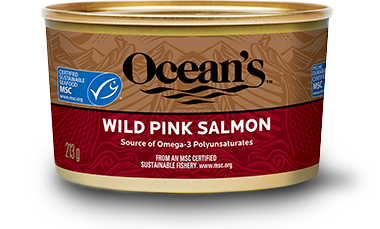Canned salmon is a nutritious and convenient way to get more omega-3 fatty acids in your diet. Pink salmon in particular is an affordable canned fish option that provides a host of health benefits. When you choose canned pink salmon that has been drained, you get an impressive amount of protein with minimal calories and fat. Read on to learn more about the nutrition you’ll find in canned drained pink salmon.
An Overview of Drained Canned Pink Salmon
Canned pink salmon is a budget-friendly way to buy salmon, especially when it’s purchased drained. Draining the liquid reduces the sodium content An 85 gram serving of drained canned pink salmon contains
- 117 calories
- 4.3 grams of fat
- 20 grams of protein
- 0 grams of carbohydrates
Drained canned pink salmon is a good food for low carb, keto, and paleo diets because it has no carbs and a lot of protein. The protein also helps you feel satiated.
Compared to other canned fish like tuna, pink salmon tends to be lower in mercury as well This makes it a safer option if you are eating canned fish regularly
The Benefits of Pink Salmon
There are good reasons why pink salmon is one of the most popular canned fish choices. Here are some of the top benefits that pink salmon provides:
-
High in omega-3s. Pink salmon is an excellent source of anti-inflammatory omega-3 fatty acids. Canned pink salmon contains EPA and DHA.
-
Low mercury levels. Because pink salmon is lower on the food chain than fish like tuna, it doesn’t accumulate as much mercury.
-
Rich in vitamins and minerals. Pink salmon provides niacin, vitamin B12, potassium, selenium and more.
-
Contains antioxidants. Pink salmon has antioxidant compounds like astaxanthin that can help reduce inflammation.
-
Bone and skin benefits. Canned pink salmon often includes edible bones and skin which provides calcium and other nutrients.
-
Sustainably caught. Most canned pink salmon is wild caught in the northern Pacific in an eco-friendly manner.
Canning and draining does not significantly reduce the omega-3 content of pink salmon. So you receive high amounts of these healthy fatty acids in each serving.
Getting More Canned Pink Salmon in Your Diet
To increase your omega-3 fatty acid intake, try incorporating drained canned pink salmon into your weekly meal routine with these dietitian-recommended tips:
-
Make salmon patties with canned pink salmon, eggs, breadcrumbs and spices for a protein-packed meal.
-
Stuff salmon, vegetables, and cream cheese into halved bell peppers and bake for an easy salmon stuffed pepper recipe.
-
Mix flaked canned salmon into pasta dishes, grain bowls, salads, scrambled eggs, rice cakes, and more.
-
Enjoy salmon sandwiches on whole grain bread with veggies like cucumbers, tomatoes, lettuce, and avocado.
-
Meal prep canned salmon fish cakes and store in the fridge to cook quickly each morning alongside eggs.
-
Create a salmon dip to use as a snack or sandwich spread by blending canned salmon with Greek yogurt, lemon juice, and fresh dill.
With minimal effort, incorporating canned pink salmon 1-2 times per week can increase your nutrition and intake of anti-inflammatory omega-3 fatty acids. Canned pink salmon is affordable, shelf-stable, and full of protein, making it an easy way to get more of this superstar fish in your diet.

Red or Pink Salmon? What’s the Difference?
FAQ
How many calories are in canned salmon drained?
How many calories are in a can of pink salmon?
|
Amount Per Serving
|
|
|
Calories
|
110
|
|
% Daily Value
|
|
|
Protein 17g
|
33%
|
|
Total Fat 4g
|
5%
|
Should you drain the liquid from canned salmon?
Is it OK to eat pink salmon out of the can?
